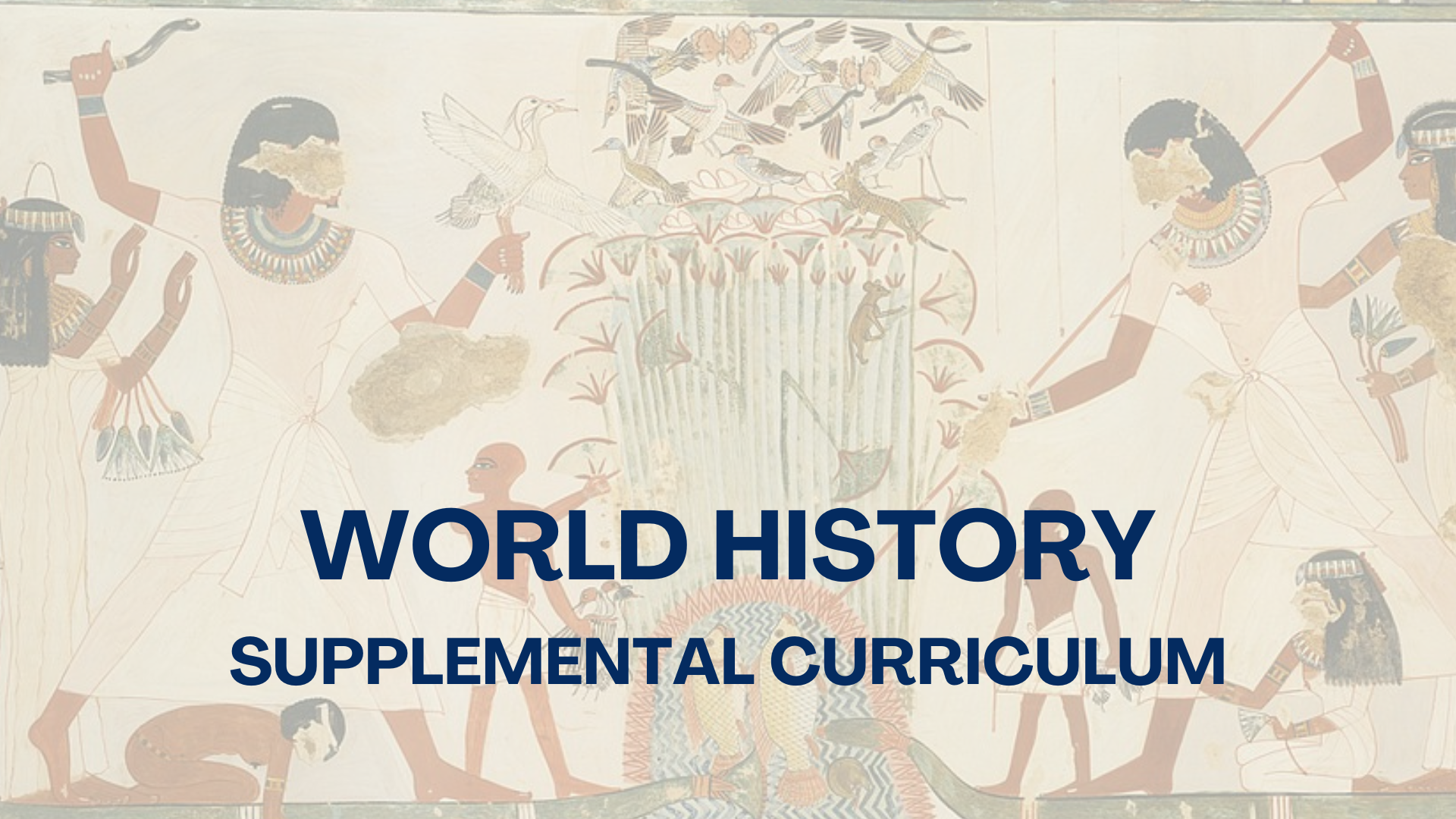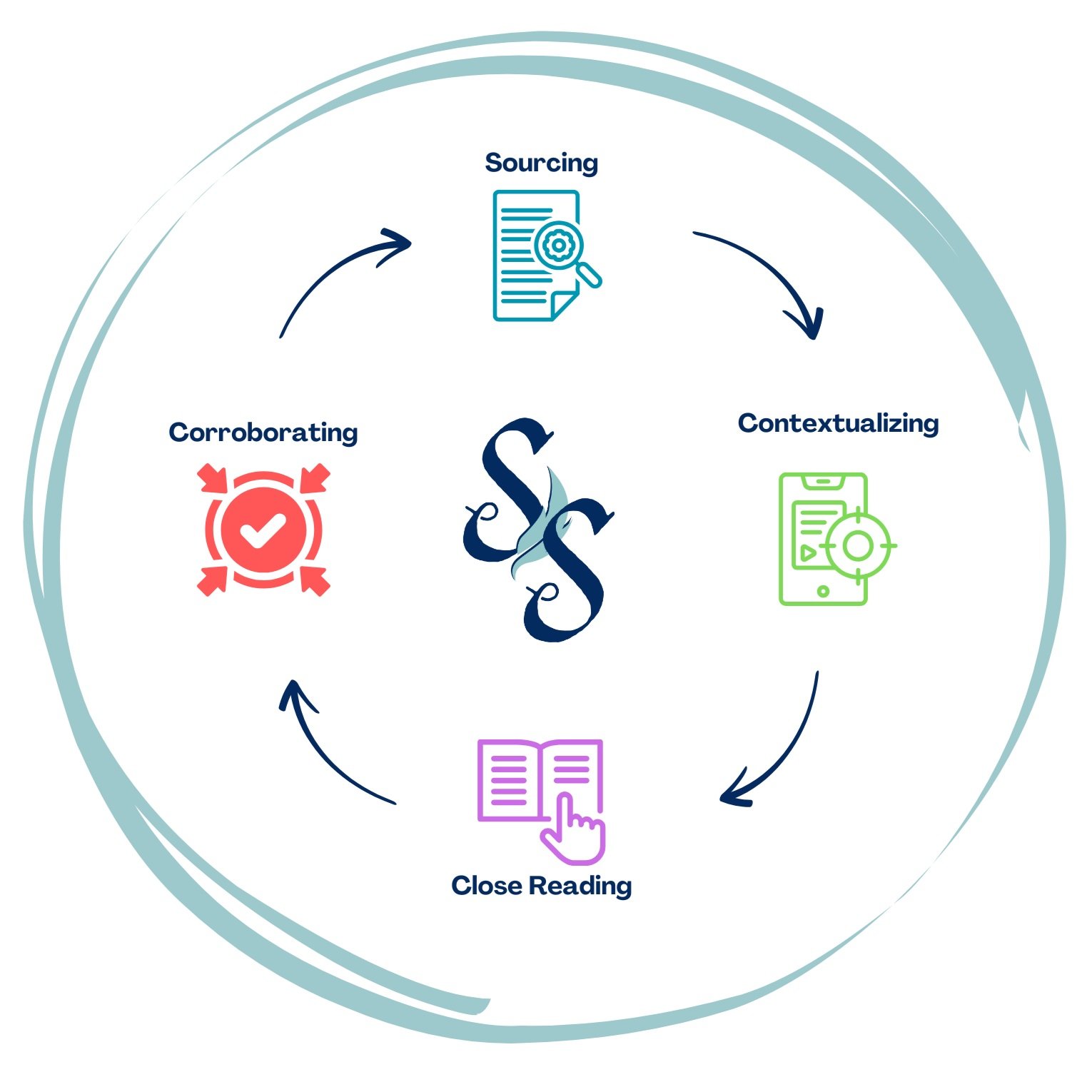
This curriculum features a wide variety of lessons spanning from ancient to modern periods, covering peoples from around the world. Its source material draws a diverse collection of perspectives in multiple formats and media, all adapted to ensure access for learners in General Education, Honors, and Advanced Placement World and European History courses.
Each standards-aligned lesson contains a curated set of historical materials, step-by step procedure, slide deck, Inquiry Map, and Squad Goals.
Interested in bringing Source Squads to your World History course? Visit our store to purchase a teacher subscription, or fill out this form if you are interested in bringing this to your entire school or district.
-
Compelling Question: What was the role of women in Ancient Mesopotamia?
In this lesson, students delve into the lives of ancient Mesopotamian women to better understand their role, rights, and responsibilities in society. Through a variety of different perspectives, students find their preconceived notions challenged and perhaps supported through historical evidence.
-
Compelling Question: How did geography shape Ancient Egypt?
This lesson asks students to consider the different ways in which the Nile River influenced the development of ancient Egyptian culture and society. Students explore a variety of different perspectives to assess the ways in which humans adapt to and adapt their environment.
-
Compelling Question: How did different religions interact in Medieval India?
From the seventh to eighteenth century, India witnessed a variety of interactions between Hindus, Buddhists, and Muslims. At times, these events were peaceful and featured cooperation between people of different faiths. However, this period also saw major strife and conflict as different groups looked to assert power and influence over the others.
This lesson asks students to explore the complexities of these interactions through a variety of different historical materials and perspectives.
-
Compelling Question: How democratic was Ancient Athens?
This lesson has students explore life in Ancient Athens and assess how democratic Athenian society was. Through a variety of different perspectives and sources, students look at characteristics of this early form of democracy and consider its connections to today.
-
Compelling Question: Did Christianity kill or help preserve the Roman Empire?
As historians have explored the fall of the Roman Empire, some have considered how the rise of Christianity may have influenced its collapse. This lesson puts students in the position to evaluate the effects of Christianity on the Roman Empire as it was beginning to fracture, and consider whether it stressed the foundations of Roman rule, or if it helped to preserve Roman culture, in particular in the East.
-
Compelling Question: How did the discoveries and inventions from the Golden Age of Islam shape the modern world?
This lesson has students explore a number of different discoveries and innovations from the Golden Age of Islam. Through them, students will make connections to our world today, and will consider the lasting influence of Muslim scholars and inventors on their lives.
-
Compelling Question: How did feudalism in Japan compare to feudalism in Europe?
This lesson has students compare and contrast feudal systems in Japan and Europe, and consider the experiences of different groups of people in both places. Though they developed independent of each other, they have key differences along with interesting similarities.
-
Compelling Question: How did the Crusades disrupt Europe and the Middle East?
This lesson has students explore a variety of different perspectives surrounding the Crusades, and asks them to consider the different ways in which they disrupted European and Middle Eastern society and culture.
-
Compelling Question: How did the Yuan Dynasty transform China?
This lesson has students explore the Yuan Dynasty, established after the invasion and conquering of China by Kublai Khan and the Mongols. In it, students explore how the Yuan Dynasty opened China to trade and cultural exchange via the Silk Road, while at the same time preserving Chinese culture and traditions.
-
Compelling Question: How did Mansa Musa’s pilgrimage to Mecca shape the global perspective of the Mali Empire?
This lesson has students explore Mansa Musa’s pilgrimage to Mecca through a number of different perspectives. Through this, students consider global perspectives of the Mali Empire and how it might add to or challenge their previous understanding of Africa.
-
Compelling Question: How did the environment influence the rise and fall of the Mayan Civilization?
This lesson has students explore how the natural environment influenced both the rise and fall of the Mayan civilization. Using a variety of sources from complicated perspectives, students assess the role of the environment and make connections to their world today.
-
Compelling Question: Was the Renaissance truly a time of progress?
This lesson puts students in the midst of a historical debate over the progress made during the Renaissance. Through it, students will be able to understand the various ripple effects of different achievements, as well as people who were left out or did not share in the advances of the era.
-
Compelling Question: Was the 17th Century truly a “Golden Age” for the Dutch Republic?
This lesson has students explore the Dutch Republic in the 17th century, and has them assess whether or not it experienced a “golden age” at that time. Through it, students explore different perspectives to interrogate the nuances of a “golden age” and consider the opportunity cost of this period for the Netherlands.
-
Compelling Question: How did British rule through the East India Company affect Indian society and cultural identity?
This lesson has students explore the actions of the East India Company in India, and its effects on Indian society and culture. Through a diverse collection of sources, students will explore both change and resistance through different facets of Indian life.
-
Compelling Question: How did different groups around the world respond to the Haitian Revolution?
This lesson has students learn about the Haitian Revolution before considering its global repercussions. Through this, learners explore how the success of the Haitian Revolution both inspired change as well as intensified fears of slave revolts around the world.
-
Compelling Question: Was the 19th century truly a “century of humiliation” in the history of China?
This lesson has students explore the “century of humiliation” in China, a period marked by foreign interference and exploitation. At the same time, the title ignores some achievements and innovations by the Chinese at the same time. Through this lesson, students consider evidence to support and refute the idea of the 19th century as a “century of humiliation.”
-
Compelling Question: What strategies did Africans use to resist European imperialism?
Students will explore and analyze the diverse ways in which African societies resisted European imperialism during the 19th and early 20th centuries. Through primary and secondary sources, students will gain an understanding of both armed and nonviolent forms of resistance and the motivations behind them.
-
Compelling Question: What role did women play in the Mexican Revolution?
In this lesson, students will examine how women participated in the Mexican Revolution as soldiers, nurses, spies, political activists, and feminists. Using a combination of historical texts including photographs (such as the First Feminist Congress of Yucatán), and music (like the song “La Adelita”), students will engage in an inquiry to uncover the often-overlooked impact of women during this transformative period in Mexican history.
-
Compelling Question: Why did countries like the United States and Cuba refuse entry to the Jewish refugees aboard the MS St. Louis?
Students will examine the 1939 voyage of the MS St. Louis to understand how immigration policy, public opinion, and prejudice shaped the international response to Jewish refugees fleeing Nazi Germany. They will analyze this event in the context of humanitarian responsibility and connect it to broader questions about global responses to persecution and genocide.
-
Compelling Question: How did U.S. actions during the Cold War affect the banana republic countries like Guatemala?
During the early to mid-20th century, several Central American countries became known as "banana republics" due to their political and economic dependence on foreign fruit companies, especially the U.S.-based United Fruit Company. In this lesson, students will explore how U.S. foreign policy during the 20th century, especially during the Cold War, negatively impacted political and social conditions in banana republics such as Guatemala.
-
Compelling Question: What role did apartheid play in shaping South Africa's national identity?
In this lesson, students will explore how the system of apartheid influenced the development of South Africa’s national identity. Through analysis of historical sources, students will investigate how apartheid policies created deep divisions in society and shaped how different groups saw themselves and their nation. They will examine how identity was shaped both for those who benefited from apartheid and those who suffered under it, and consider whether a unified national identity was possible during this period.
-
Compelling Question: How did the aftermath of the Rwandan Genocide affect the communities and individual lives of survivors?
In this lesson, students will examine firsthand testimonies from survivors of the 1994 Rwandan Genocide, during which an estimated 800,000 Tutsi were systematically killed by extremist Hutu forces over the course of 100 days. By analyzing these personal stories, students will gain insight into the human impact of the genocide and explore how sharing these stories was a part of the reconciliation process.

